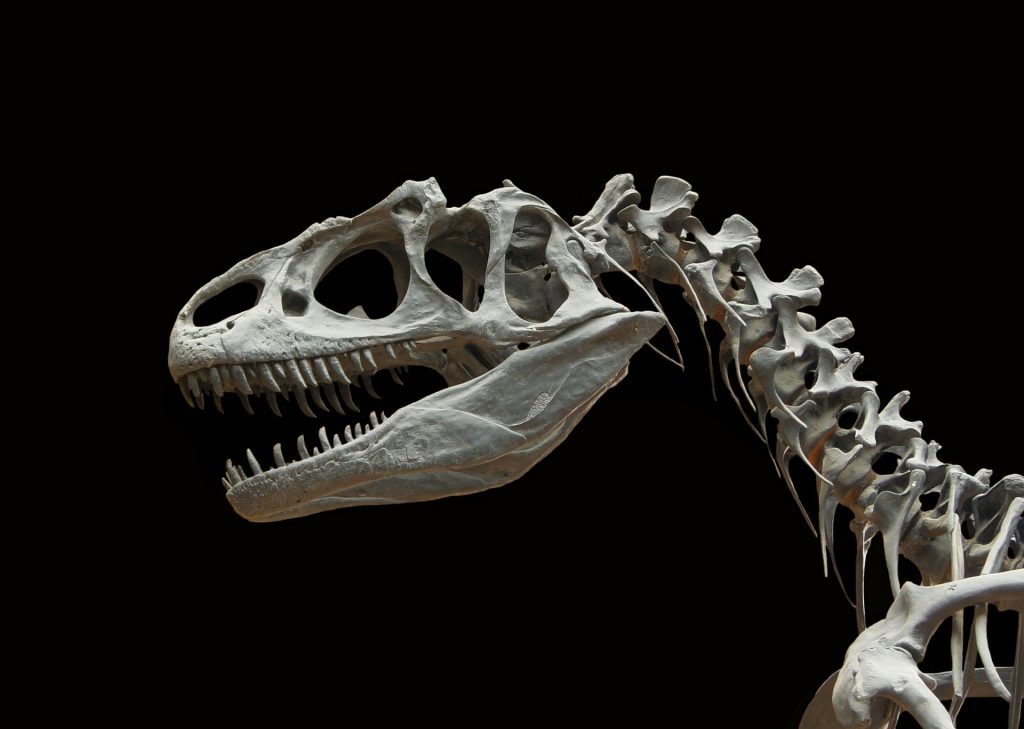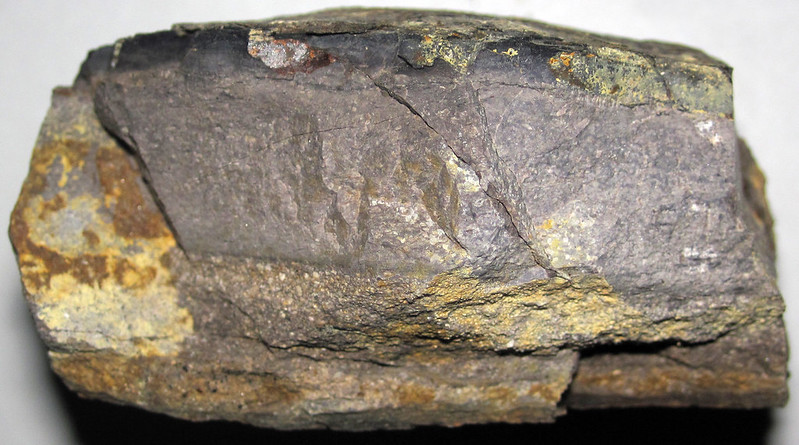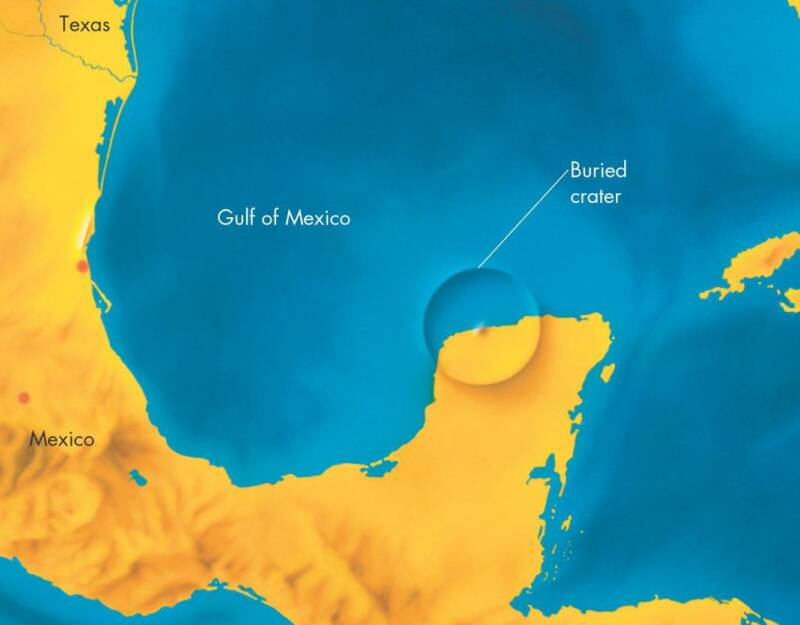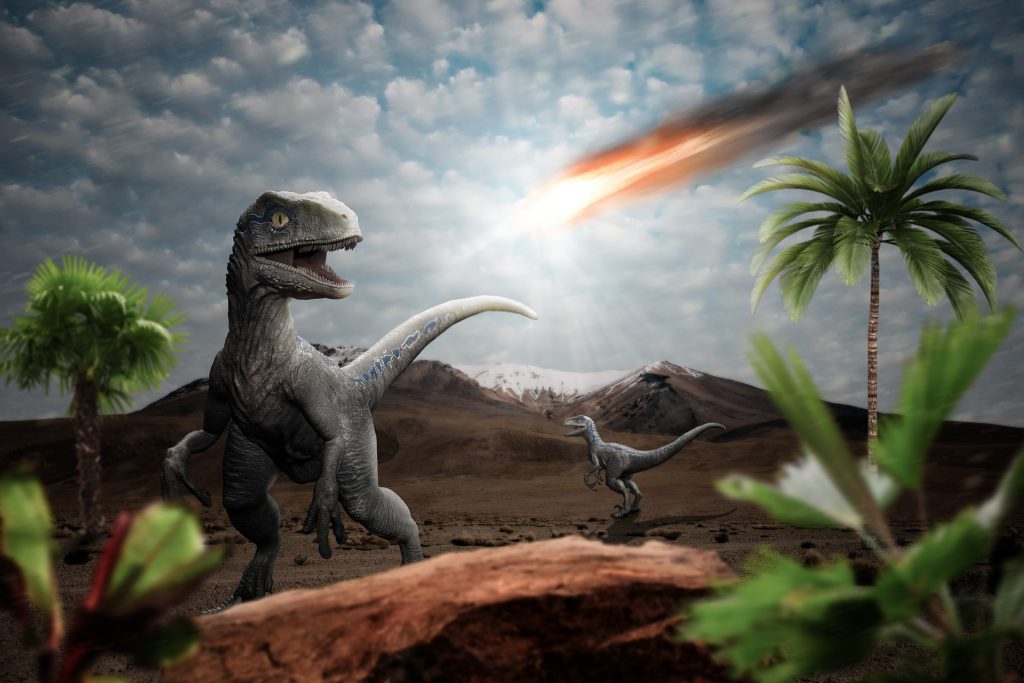Dinosaurs are a diverse group of reptiles that appeared about 250 million years ago at the beginning of the Triassic period and dominated the Earth during the Jurassic and the Cretaceous period. However, they suddenly vanished from the face of the Earth after a nearly 200 million years’ presence, at the end of the Cretaceous period approximately 66 million years ago, living behind only fossils. What were the factors that drove these astonishing creatures to extinction? This is a question that has been troubling scientists for many years, but it seems that they are now closer to the answer than ever.
The Cretaceous-Paleozoic extinction
Approximately 66 million years ago, a massive extinction event took place. This is known as the Cretaceous-Paleogene (K-Pg) or Cretaceous-Tertiary (K-T) extinction. Dinosaurs were not the only victims of this event. It is estimated that three quarters of the species that lived on Earth during that period disappeared, whether they were animals or plants. We do not exactly know the duration of the K-T extinction. The records paleontologists have in their hands are incomplete, preventing them from discovering whether it was a rapid extinction or something that lasted for longer periods. We do know, though, that the K-T extinction marked the end of the Cretaceous period and the Mesozoic Era, which was followed by the Cenozoic Era that extends to the present.
A few examples of organisms that disappeared during that period along with the dinosaurs are many species of insects, lizards, birds, mammals, teleost fish, sharks, ammonites, and plankton. It seems that plants were affected less compared to animals, perhaps because their seeds and pollen are well protected from harsh conditions. Of course, life continued on the planet after this destruction, and some of the species that managed to survive started to flourish in an environment where there were more empty ecological niches or less competition. Mammals, birds, and flowering plants evolved and dominated the Earth, gradually leading to the flora and fauna that we see today.

Two of the most well-known theories
For years, scientists have tried to unravel what the cause of this mass extinction was, leading to many theories, with some of them being more plausible than others. Two of them have survived to this point, and paleontologists are seeking evidence to find out which one is the most possible reason behind the disappearance of so many species. One theory proposes that the cause came from the sky. A meteor the size of a mountain hit the Earth and resulted in drastic climate change. The other one suggests that volcanic eruptions released large amounts of carbon dioxide and other gases that again changed the planet’s climate. Others suggest that a combination of factors led to this destruction rather than one single event. For example, the volcanic eruptions could have changed the conditions of the ecosystems, making it harder for the Earth’s inhabitants to survive, and then the asteroid came and made things worse, driving many already vulnerable species to extinction. However, a recent study that was published in 2020 claims that the volcanic eruption theory is not a possible explanation of the C-T extinction event, as we will see later.
The Deccan Traps theory
Volcanic eruptions in Deccan Traps, located in what is now India, about 60 to 65 million years ago resulted in lava covering a large area of land and carbon dioxide and other caustic gases being released into the sky. Those drastic changes in both land and atmosphere disturbed the ecosystems and their inhabitants. The temperature changed, and carbon dioxide made the oceans too acidic for the survival of many species. It is believed that due to this event, dinosaurs and other species started to decline. They were either gradually led to extinction simply because of that factor, or they became more vulnerable, so when the asteroid hit, they died off. However, a recent study now reveals that this explanation is not that possible. Scientists found that the timing of the eruptions does not add up. The eruption at Deccan Traps occurred a couple of hundred thousand years before the massive extinction of K-T. It surely affected life on the planet, but the effects would have been gone by the time of the K-T event.

The asteroid theory
A more possible explanation for the K-T extinction is described by the theory that a meteor collided with the Earth, and the consequence of that impact was the massive devastation of living things. In 1980, physicist Luis Alvarez and his geologist son, Walter discovered high amounts of iridium on clay that dated back to the K-T period. Iridium is an element that is rarely found on Earth but is abundant in space. This led them to propose a theory that an asteroid, meteor, or comet crashed into the Earth around 66 million years ago. However, with no sign of a crater, many refused to believe this theory. This was until 11 years later when scientists found a large crater at the coast of Mexico’s Yucatan Peninsula with the expected size and age according to their estimations. The crater is now known as Chicxulub and is identified as the impact site of the dinosaur killer.

The impact itself did not cause that much of a problem compared to the secondary effects. Suddenly, the conditions in the land, water, and air became extremely harsh. The ground shook, soot and dust filled the sky, reducing the light from the Sun that reached the surface, debris rained from the sky, and wildfires started. Mountains formed, the temperature dropped, and the impact generated a destructive tsunami that buried animals and plants. The dropped temperature, along with the darkness, caused trouble for the plants that couldn’t now grow and produce food for herbivores. Therefore, herbivores were affected, and soon the whole food chain was struggling to find food. The tsunami hit lots of fish while they were alive and swimming and killed them instantly. But what’s more interesting is that the tsunami also hit dinosaurs that were running on the land.
A few years after the impact, the light that reached the Earth’s surface returned to normal, but the temperature increased at higher levels than before the event. All of this change in many aspects of the environment took its toll on many species. Those that survived the impact, had to deal with these devastating conditions to which they were not used to. Thus, many of them died out, especially animals bigger than 25 kilograms. Smaller animals had a very important advantage as their size allowed them to hide under rocks and get protected from the harsh conditions. Therefore, the dinosaurs with their large bodies were not able to survive. The only lineage closely related to dinosaurs that managed to survive was the one that gave rise to the modern birds. The ancestors of many species that are alive today were the survivors that overcame the devastating consequences of the K-T extinction. It is estimated that it took some of them about 15 million years to reach the size of the big mammals that we have today.
Sources:
https://www.sciencenewsforstudents.org/article/dinosaurs-extinction-asteroid-eruptions-doom
https://www.nhm.ac.uk/discover/how-an-asteroid-caused-extinction-of-dinosaurs.html
https://edition.cnn.com/2020/01/16/world/dinosaur-extinction-volcanoes-asteroid-scn/index.html

